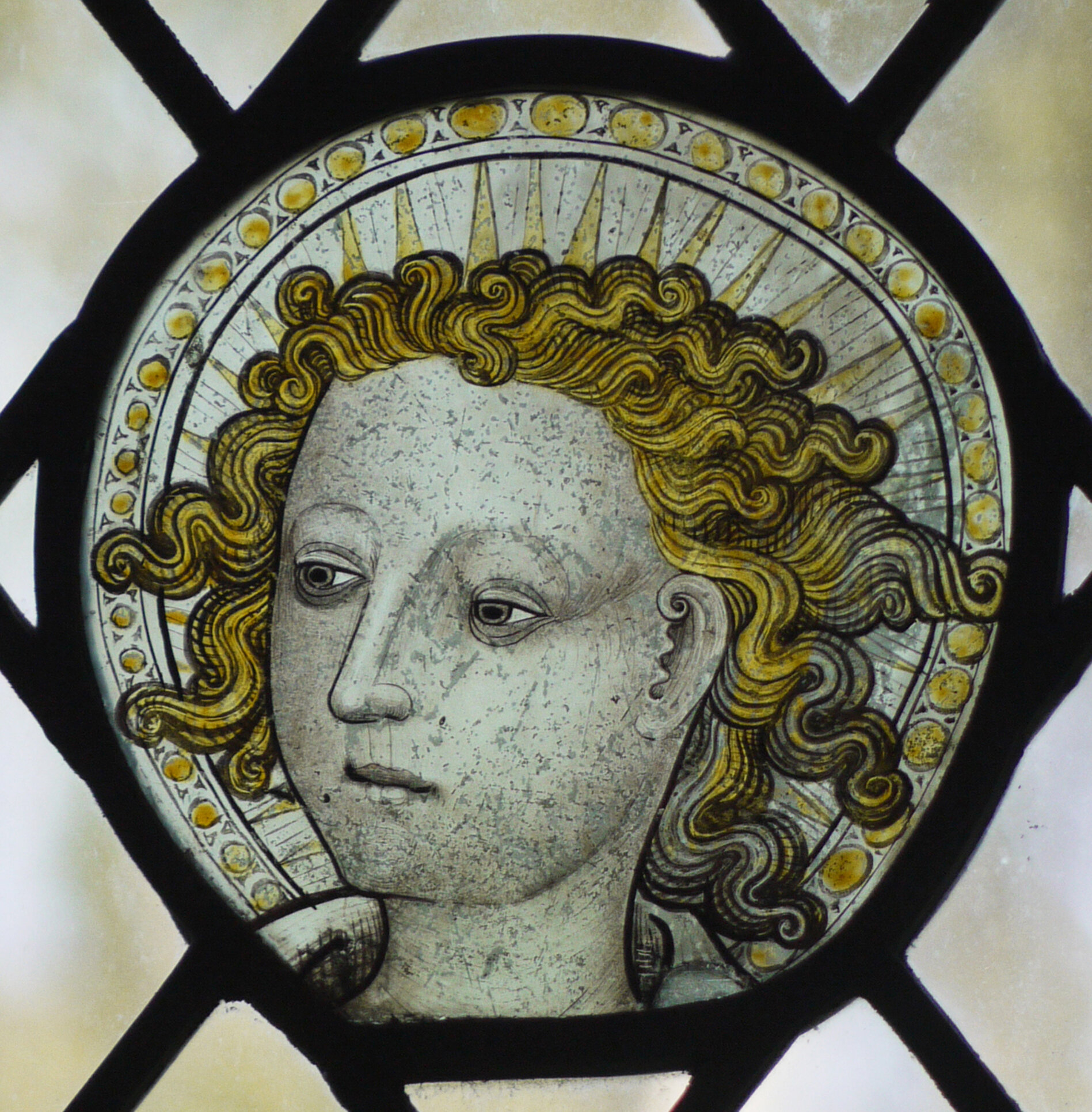I feel lucky to have visited the stained glass museum, upstairs in Ely Cathedral, last week when such things were open. My last visit was about thirty years ago, I read that it has been revamped since then but much remains the same. The collection of fabulous stained glass panels is mounted on light boxes in the narrow triforium gallery. The contrast between the experience of viewing these here, stripped of architectural context and the stained glass in the windows of the stunning cathedral space is inevitable, but still painful. However, it’s fine if you focus on detail, and as I’ve been looking at painted faces recently that’s what I concentrated on. Here are six of the best (below).
Top left to right: Mary at the tomb, George Hedgeland 1856. St Catherine from Wood Walton, Cambridgeshire c1310-30. Virgin and Christ Child, Margaret Traherne 1956.
Bottom left to right: Head by John Richard Clayton of Clayton & Bell 1861. Crowned female head, Norfolk c.1440-60. From the legend of St. James, Rouen c.1500-50.
The other aspect of the museum I enjoyed this time around was getting close up to panels by some of the favourite makers whose work I have got to know on my stained glass travels.
Mary Lowndes: Left, The Finding of the Saviour in the Temple (detail) 1910. Right, St Peter, Christ, Mary Magdalene, St Peter’s Church, Great Cheverell, Wiltshire 1909.
It was the window in Great Cheverell, Wiltshire (above right) that made me really appreciate the artist Mary Lowndes, this east window has an incredible presence in the church. Obviously this is the very quality you don’t get from the display in the museum, but the soft painting and interplay between the figures in her Saviour in the Temple panel (above left) are wonderful to see.
I saw a Leonard Walker window in Lydd Church on the Romney marshes (below right) and loved his technique, where specially made glass full of streaks and textures does the work that painting would normally do. The example in the museum (below left) is a replica of part of a window he made for the Hong Kong and Shanghai Bank, Singapore. The minimal painting, on head, hands and feet, blends in beautifully with the hand made glass pieces.
Leonard Walker: Left, Commerce 1923. Right, Christ in Glory, All saints Church, Lydd 1959.
Geoffrey Clarke: Left, Priest 1949. Centre, exhibition panel. Right, Church of the Ascension, Plymouth 1958.
The museum has acquired four works by Geoffrey Clarke, all of them fascinating, pioneering and difficult to see properly in the space. Priest (above left) is made of glass pieces set in layers of painted plaster. The exhibition panel (above centre) I saw last year in the Pangolin Gallery at Masterpiece is made of cast aluminium, as are his windows in the Church of the Ascension in Plymouth (above right) which I never managed to get inside. Whenever I see a glass panel by Geoffrey Clarke it makes me want to start experimenting with materials.
There aren’t many stained glass panels around by the pop artist Pauline Boty. The first one I ever saw in an exhibition at the Pallant House in Chichester (below right) I thought was the best thing I’d ever seen at the time. Her stained glass self portrait in the NPG is wonderful, as is the Siren panel (below left) that I was thrilled to see at the museum. I read that Boty was keen to get out of the stained glass department at The Royal College of Art in order for her work to be taken more seriously. I also saw a photo of her at Wimbledon School of Art where she first learned stained glass, with her fellow students including my teacher at The Central School of Art, Tony Attenborough - I’m so pleased to have discovered this link.
Pauline Boty: Left, Siren c1958-62. Right, Untitled (dreaming woman) 1961.




























